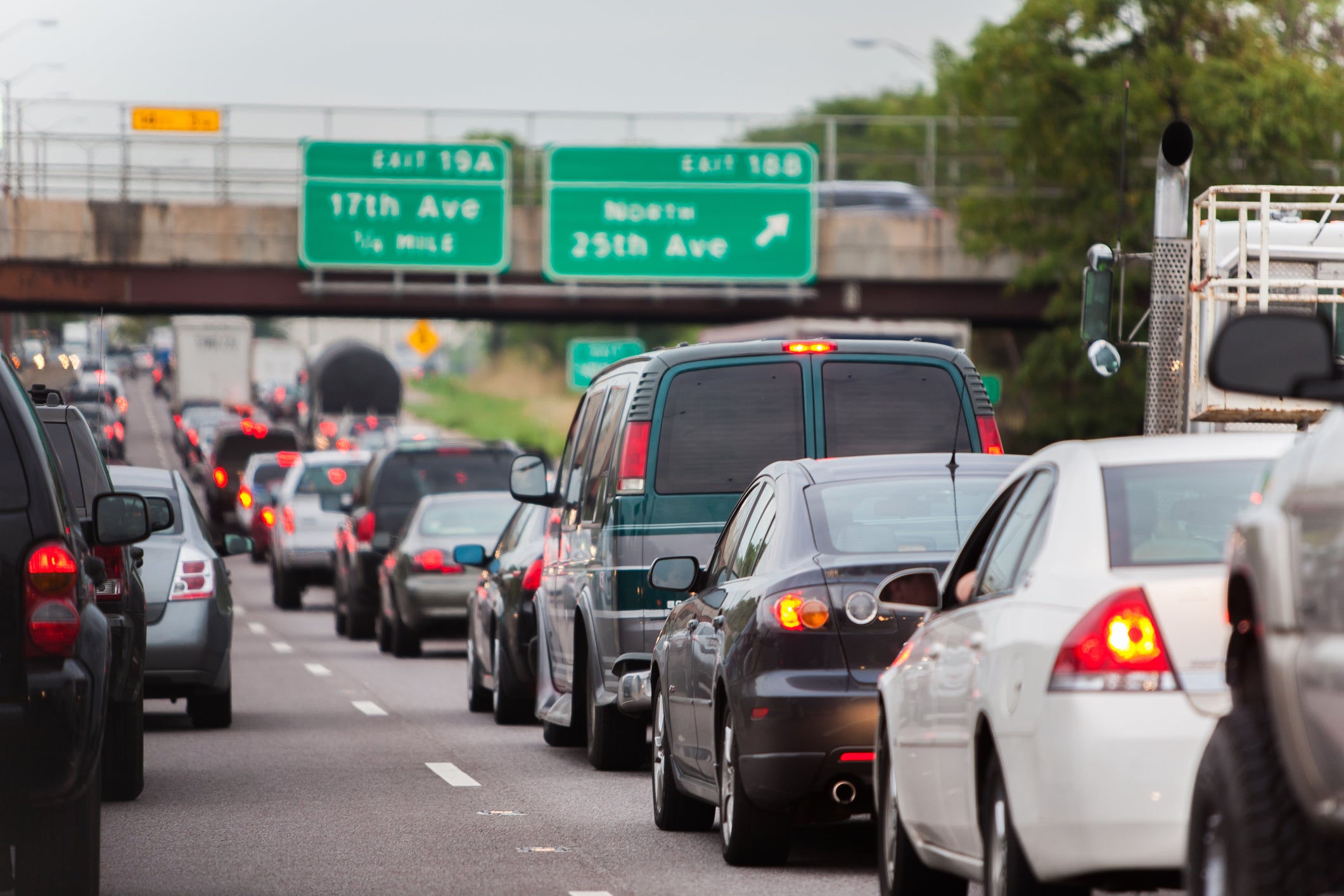Is it illegal to drive barefoot?

Key takeaways
- While it’s not technically illegal to drive barefoot in a car, the practice can be unsafe.
- In some states, drivers may be fined if driving barefoot contributes to an accident.
- Open-toed shoes like flip-flops are often considered less safe than flat, close-toed shoes when driving.
Why is it illegal to drive barefoot? Well, despite what your parents told you when you were a teenager, it’s not. No state in the U.S. has a law that explicitly outlaws driving with your shoes off. But that doesn’t mean it’s a great idea. You may have a harder time controlling a pedal with wet or sore feet. Plus, a sturdy sole often makes it easier to apply even pressure to a pedal. We researched the potential risks of driving barefoot as well as local regulations you should keep in mind in certain parts of the country.
Is it illegal to drive barefoot?
Although no states have laws directly forbidding individuals from driving barefoot, it is still a practice that is frowned upon in many places since it may lead to a lower level of safety behind the wheel. In some states, it is up to the discretion of the police as to whether driving barefoot is a sign of reckless or negligent driving. In the event that a driver is stopped by the police for another reason and is found to be barefoot, they might earn a ticket for negligence that could cost them money and time.
What states have policies on driving without shoes?
Most states do not have specific laws or statutes related to barefoot driving. However, there can still be penalties for driving without shoes and socks. Why can’t you drive barefoot everywhere even if it’s technically legal? Some states leave penalties up to the discretion of local regulations or individual law enforcement officers. The following table shows the states that have specific recommendations or rules regarding driving while not wearing shoes.
| State | Policies or recommendations |
|---|---|
| Alabama | Driving a motor vehicle barefoot is permitted, but motorcycle riders must wear some type of footwear. |
| Alaska | Driving a motor vehicle barefoot is not illegal, but motorcyclists should wear proper footwear. |
| Arizona, Arkansas, California, Nevada | It is not illegal to drive barefoot, but you could be charged with reckless driving or face civil fines if driving barefoot contributes to an accident. |
| Colorado, Connecticut, Delaware, District of Columbia, Florida, Georgia, Idaho, Illinois, Kentucky, Louisiana, Maine, Maryland, Michigan, Minnesota, Mississippi, Montana, Nebraska, Nevada, New Jersey, New Mexico, New York, North Carolina, North Dakota, Oklahoma, Oregon, Pennsylvania, Rhode Island, South Dakota, Texas, Vermont, West Virginia, Wyoming | Operation of a motor vehicle by a driver with bare feet is permitted. |
| Indiana, Iowa, Missouri, Ohio, Wyoming | While it is not illegal to drive barefoot, it is formally considered unsafe. |
| Tennessee | Though barefoot driving is not illegal, local regulations could prohibit it. |
| Utah | Although it is not illegal in Utah, the state’s Highway Patrol suggests that wearing shoes makes it easier and safer to operate your vehicle. |
| Virginia | While not illegal, barefoot driving is not encouraged. Instead, drivers should wear safe footwear without an open heel. |
| Wisconsin | According to the state’s Department of Transportation, driving without shoes is legal. |
Can I get in trouble if I get into an accident while driving barefoot?
Even though it is not illegal to drive barefoot, you may find yourself facing difficulties if you do so. For example, if you are stopped by a police officer for another reason, the officer might, at their discretion, give you a ticket for reckless driving.
If you are in an accident while driving barefoot, law enforcement may determine that driving barefoot or with inappropriate shoes played a role in the accident, thus resulting in penalties. For example, if you are driving in flip-flops, and the sole of the shoe catches on the gas pedal, causing you to accelerate instead of brake at a red light, you could face penalties if this causes you to hit another car.
Another factor to consider is the impact this could have on your car insurance. Insurers reward safe drivers with low average rates, while they are likely to raise your rate if you are involved in an accident. Filing a claim with your insurer, whether you are at-fault or not in the accident, may be enough to increase your rate. If the accident causes injuries, your bodily liability coverage may not be enough to pay for them, depending on what your insurance covers, or if the accident damages property, the same could be true.
If your own car is damaged in an accident that was caused by a driver who is barefoot or wearing inappropriate shoes, the policyholder may be out of luck unless they have full coverage, which includes collision and comprehensive insurance. These two types of coverage pay for damage to your vehicle in an at-fault accident, but they are not mandatory in any state. In short, you can probably expect to see an increased premium if you are in an accident or have moving violations on your record caused by driving barefoot.
Why do people think it is illegal to drive barefoot?
Like many urban legends or misconceptions, it is unclear where the myth that driving barefoot is illegal started. Since most people drive with shoes, it may be that it was just generally accepted that footwear is required for driving. In fact, you may have learned in driver’s education that driving with proper footwear is safer. Making safe driving choices is one of the best ways to avoid an accident, and that includes considering your choice of footwear.
In 1994, a man named Jason R. Heimbaugh from the University of Illinois at Urbana did a comprehensive survey to determine whether the urban legends about driving barefoot were true. He wrote to every state in the U.S. and received confirmation from all fifty states that driving barefoot was not illegal. His research conclusively debunked the legend but also made it clear that barefoot driving was discouraged by most states.
Is driving barefoot dangerous?
Indications are that driving barefoot—or with inappropriate footwear—is considered potentially dangerous in most states. Consider these scenarios that may have you paying attention to your shoes more carefully when you get behind the wheel:
- You’re driving back from a day at the beach, and your feet are bare, damp and sandy from swimming. You find it hard to control your vehicle because they keep slipping off the pedals.
- Without the traction of a good pair of sensible shoes, your bare feet are unable to apply as much force on the gas and brakes, adding seconds to your response time and causing issues when you need to suddenly brake to avoid an animal, person or object.
- You’re in a head-on accident caused by something other than your bare feet, but because you are not wearing sturdy shoes, you sustain injuries to your lower legs and feet.
- You get stopped for speeding, and the officer notices your bare feet on the pedals. Even though it’s not illegal, she feels it could be dangerous and gives you a ticket for reckless driving.
Are some shoes more dangerous than driving barefoot?
There are arguments that suggest it may be safer to drive barefoot than to drive wearing certain types of footwear that could impede your abilities, such as flip-flops or high heels. However, there are a handful of states and localities that could cite you for reckless driving or negligence if they are able to determine that barefoot driving caused an accident.
If a shoe affects the way you use the pedals or reduces your ability to gauge how hard to press down, you may want to reconsider your footwear.
Driving while wearing some of these common shoe types could also be considered dangerous:
- Open-toed shoes like flip-flops or sandals
- Open-heeled sandals
- High heels and wedge heels
- Thick-soled boots or shoes
- Shoes with long laces
- Shoes without traction or with slippery soles
- Slip-on shoes
For the best control while driving to regulate speed or braking, it is recommended to wear shoes with no heel or a low heel. The shoe should also have good tread with traction or some grip. The shoes should not be so thick that you have trouble controlling the pedals.
Close-toed shoes are better than open-toed shoes since gaps can cause your shoe to catch on the pedal. Shoes with long laces can be hazardous as the laces could get looped around the pedal. If you want to wear any of the shoes listed above, it is a good idea to bring a safe pair of shoes along to just wear while you are driving to your destination.
Frequently asked questions
Why we ask for feedback Your feedback helps us improve our content and services. It takes less than a minute to complete.
Your responses are anonymous and will only be used for improving our website.
You may also like

Driving is back to pre-pandemic levels

Penalties for driving without insurance in Oklahoma

Penalties for driving without insurance in Oregon



